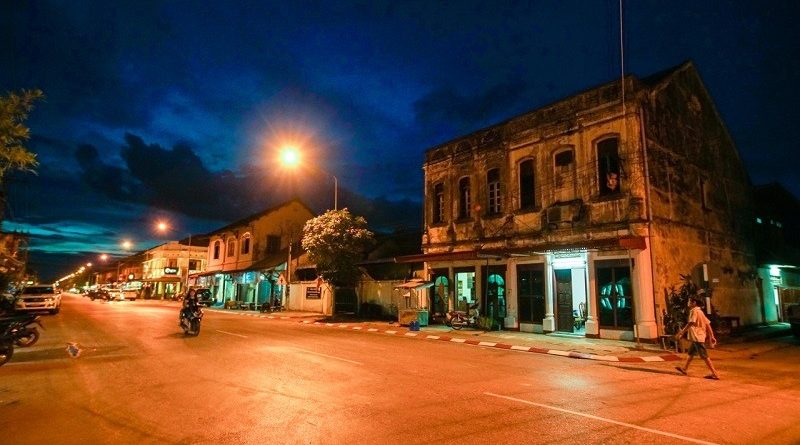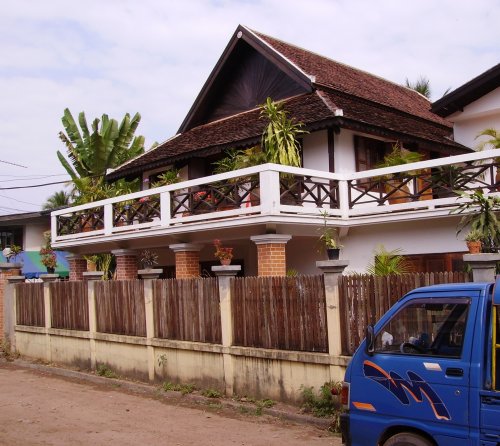The Architectural Curiosities Of Thakhaek
Source: Vientiane Times
The French were forced out of Indochina in the 1950s but signs of their presence still remain in isolated pockets of the countries they colonised, in the form of old buildings.
In the late 19th century, the French began to colonise the area known as Indochina and by the early 20th century they controlled vast areas of Vietnam, Laos and Cambodia.
In Laos, some distinctive French buildings can be seen today in Thakaek district – the capital of Khammuan province, which is located on the banks of the Mekong River. On the other side of the river to the west is Nakhon Phanom province in Thailand.
Much of the architecture in Thakhaek’s old town can be traced to French construction in the early 20th century. The original exteriors were brown, but over the years the colours of many of the houses have changed, and most now appear to be black.
Some people in Vientiane claim that the black colour is not the result of painting, but has been caused by natural discolouration over time and the fact that these buildings have not been repaired or restored.
“See these old buildings; sometimes they look just like the drawings done by a renowned foreign artist,” they say.
The name Thakhaek means ‘guest landing’, with the word ‘khaek’ meaning guest while the word ‘tha’ is a reference to the town’s earlier function as a boat landing for foreign traders.
The heart of the old town can be found around the fountain square near the river, where many old buildings still remain.
During the French colonial period, Thakhaek was an important trading town. As a result of strong French presence, a lot of French style buildings are still evident around town, dating from the late 19th and early 20th centuries.
Visitors to this pleasant town can spend a happy few hours strolling around the old quarter, which centres around a broad plaza that stretches away from the river for a couple of blocks.
The most interesting buildings can be found within five or six blocks of the plaza in either direction. Visitors can easily make a loop by walking along the riverfront, or one block away from the river, until they get to the end, then heading over one block further in and walking back.
This route will take you past about 15 buildings which have been preserved for their historical value, as well as being architecturally striking.
They remain because the province has banned their demolition, and today they are one of Thakaek’s main tourist attractions. Some have been turned into restaurants or guesthouses and have become sizeable income earners for their owners.
Khammuan province is home to numerous other places of interest, such as Khamphaeng Hin (Khammuan’s Great Wall), the Sikhottabong stupa, Buddha cave, and Hua Phou Sout (a scenic lookout point).
Khammuan is about 300 kilometres from Vientiane. Public and private buses are available at the Thakhaek bus station every day and night.
Recent history
In early 1946, the French army occupied various areas of Thakhaek district.
Prince Souphanouvong, who went on to become the first president of Laos following the country’s liberation from foreign domination in 1975, led the people in a courageous attempt to defend Thakhaek against a brutal invasion by French troops.
He fought bravely against the French, but he and the townsfolk were unsuccessful in their efforts to repel the invaders.
On March 21, 1946, Souphanouvong ordered those who remained after the violent skirmish to cross the Mekong River to Thailand.
Souphanouvong later returned to Laos and continued to fight for liberation along with other revolutionary Lao leaders.




